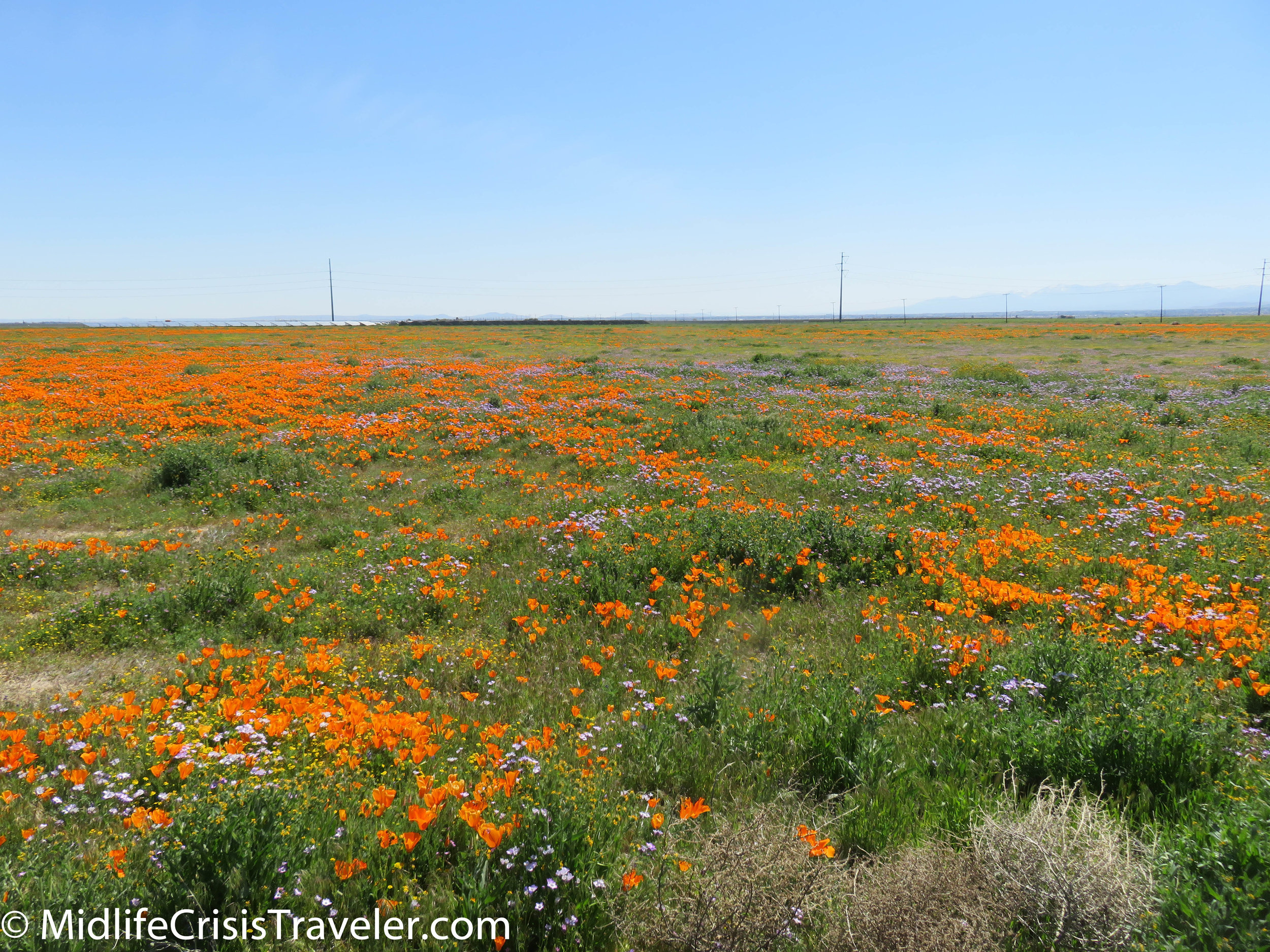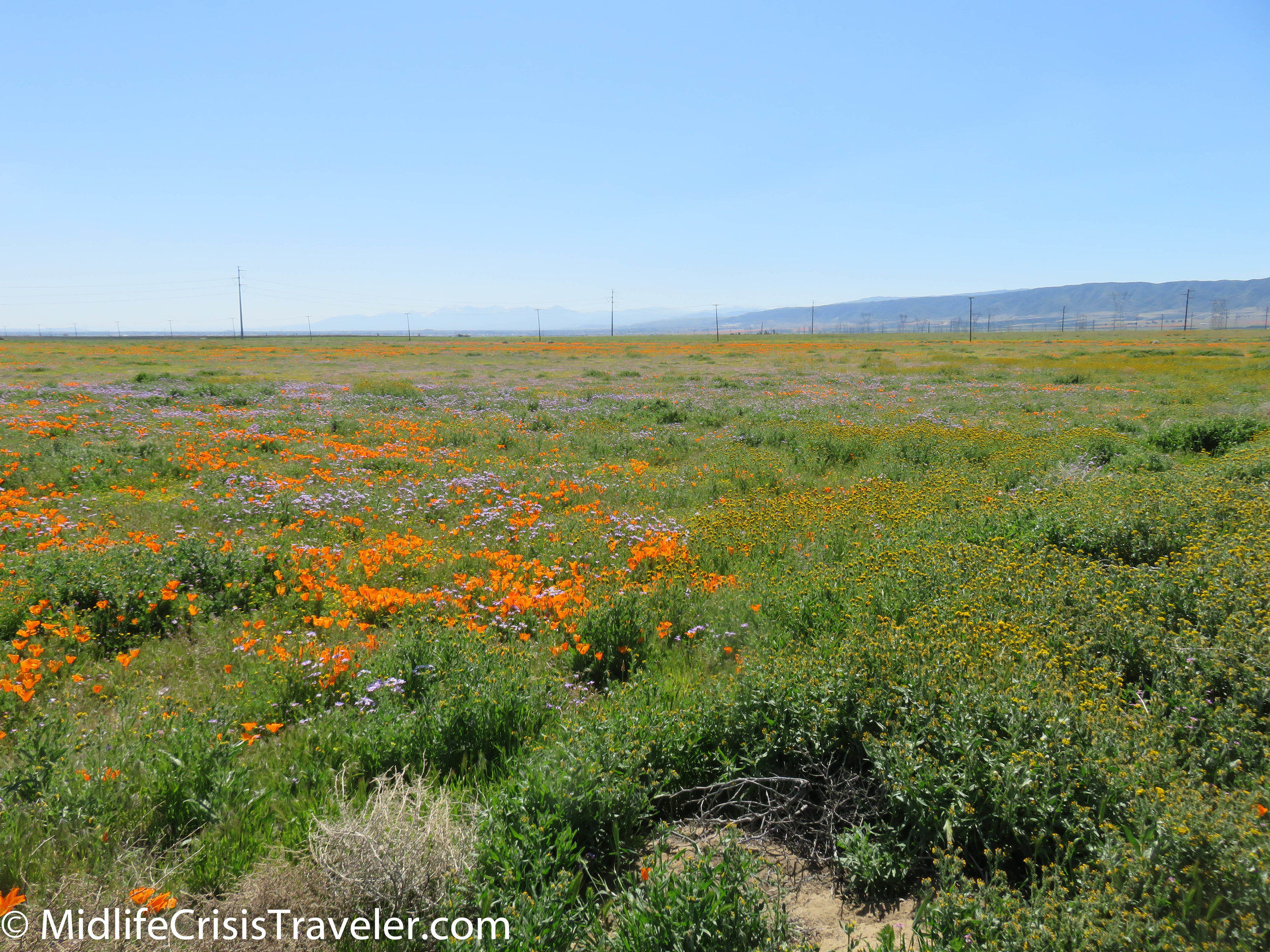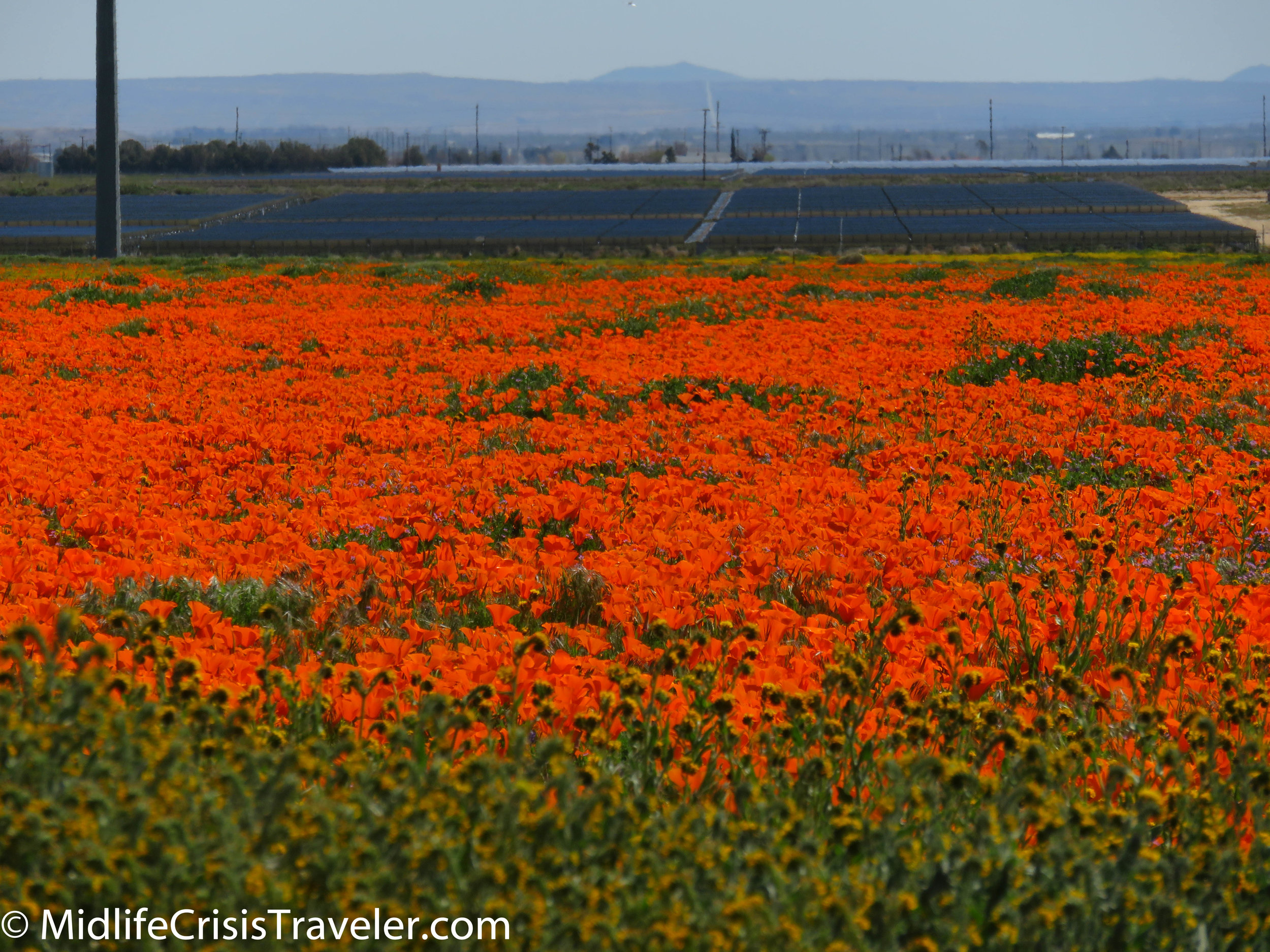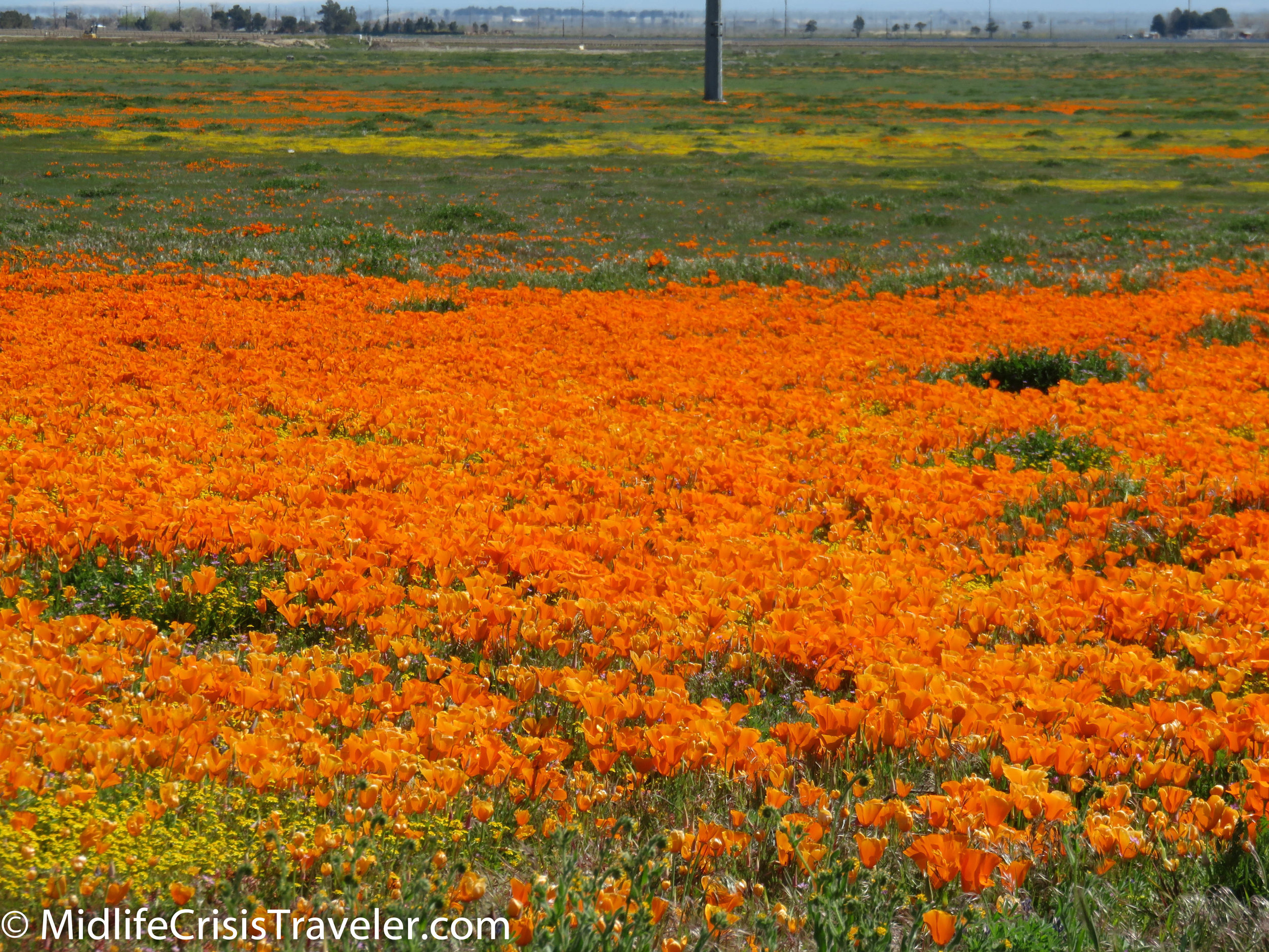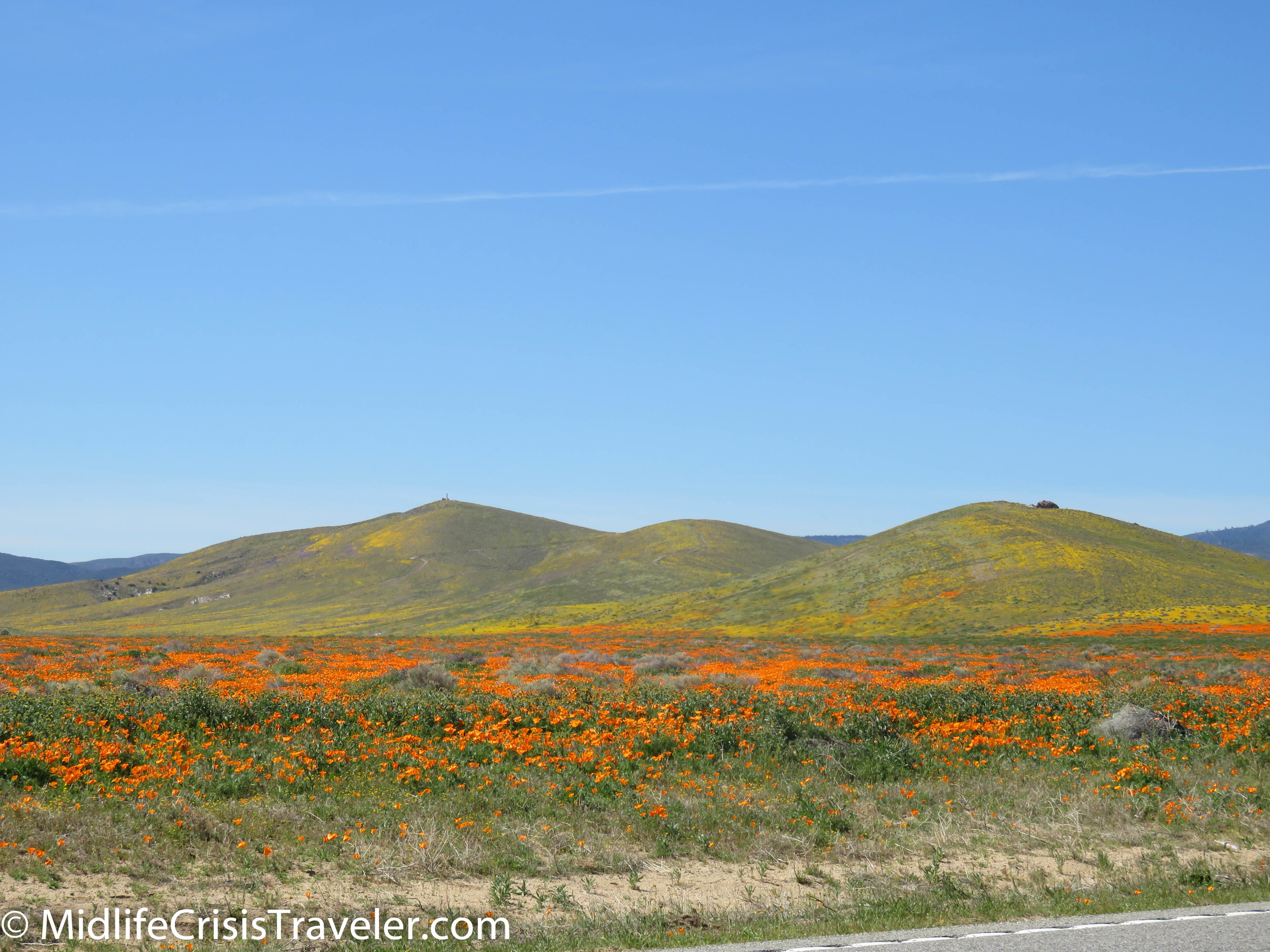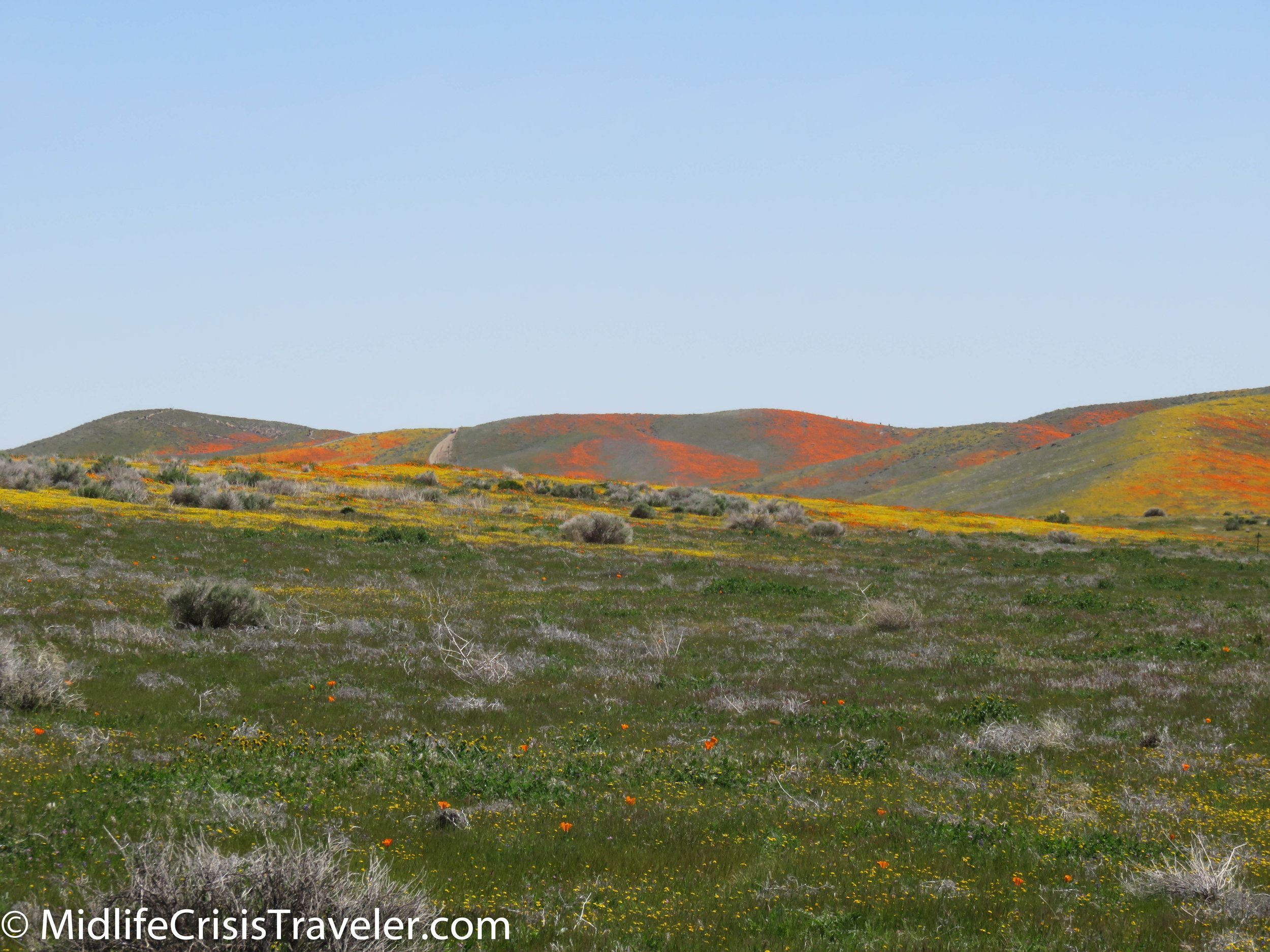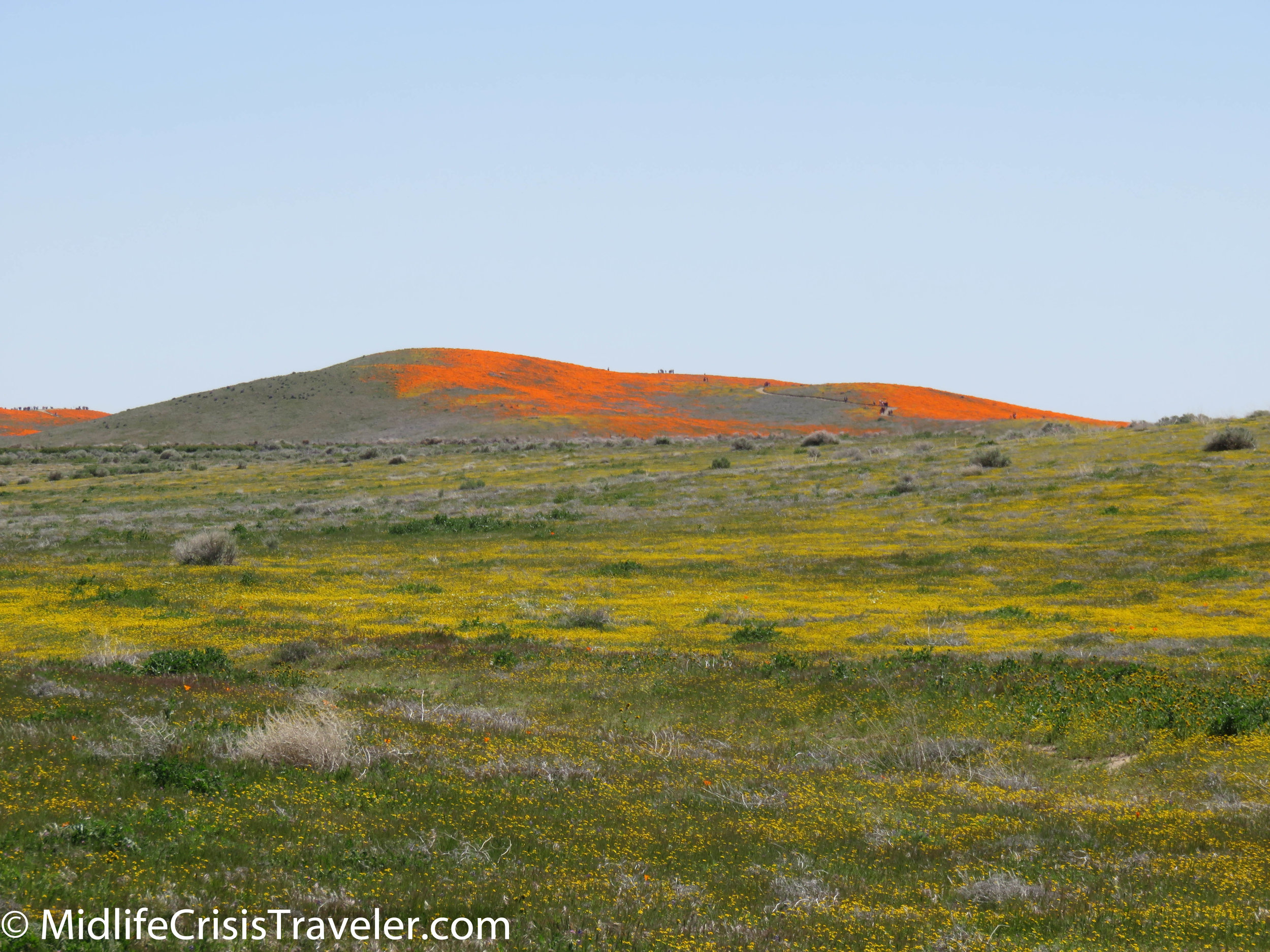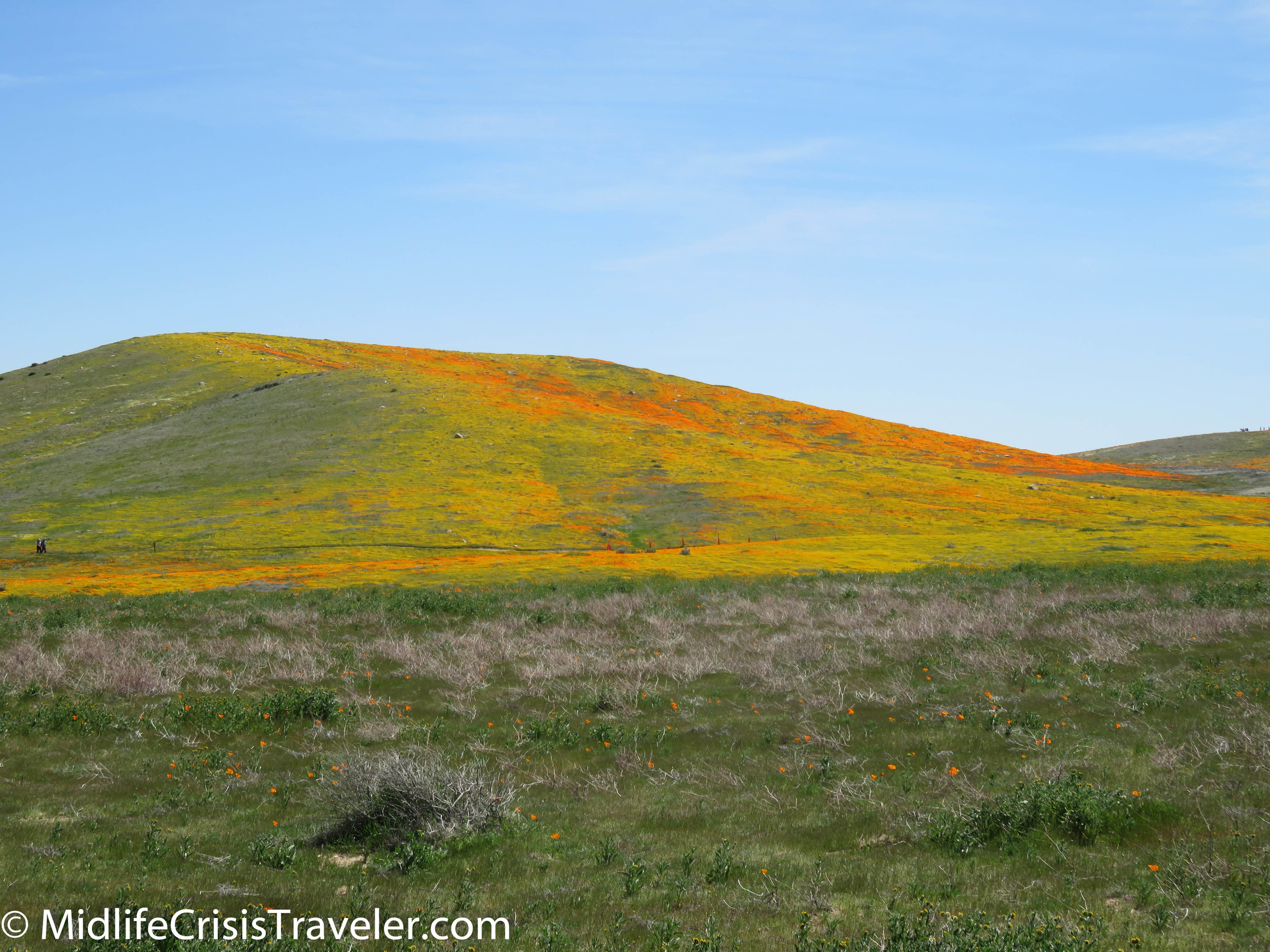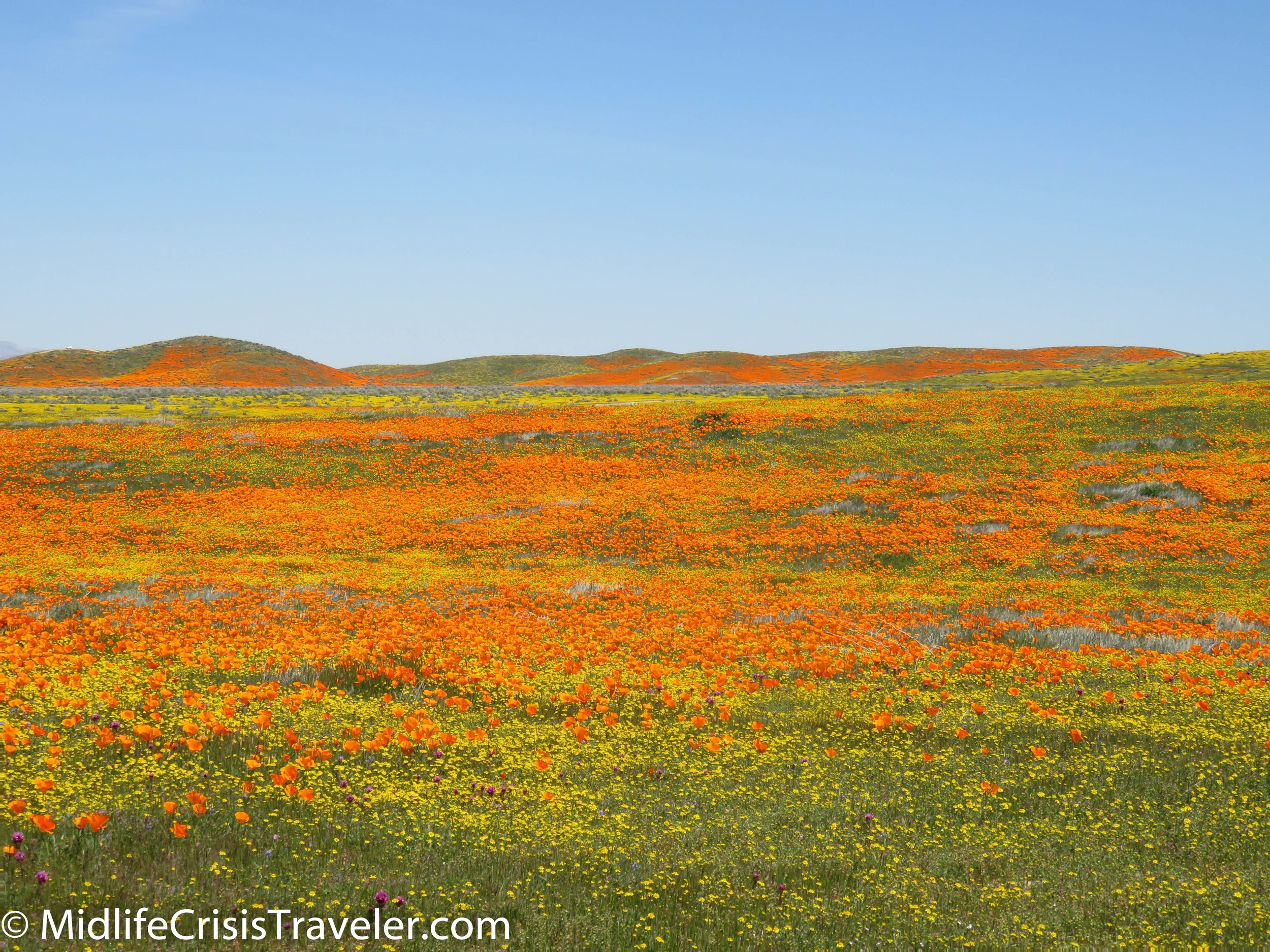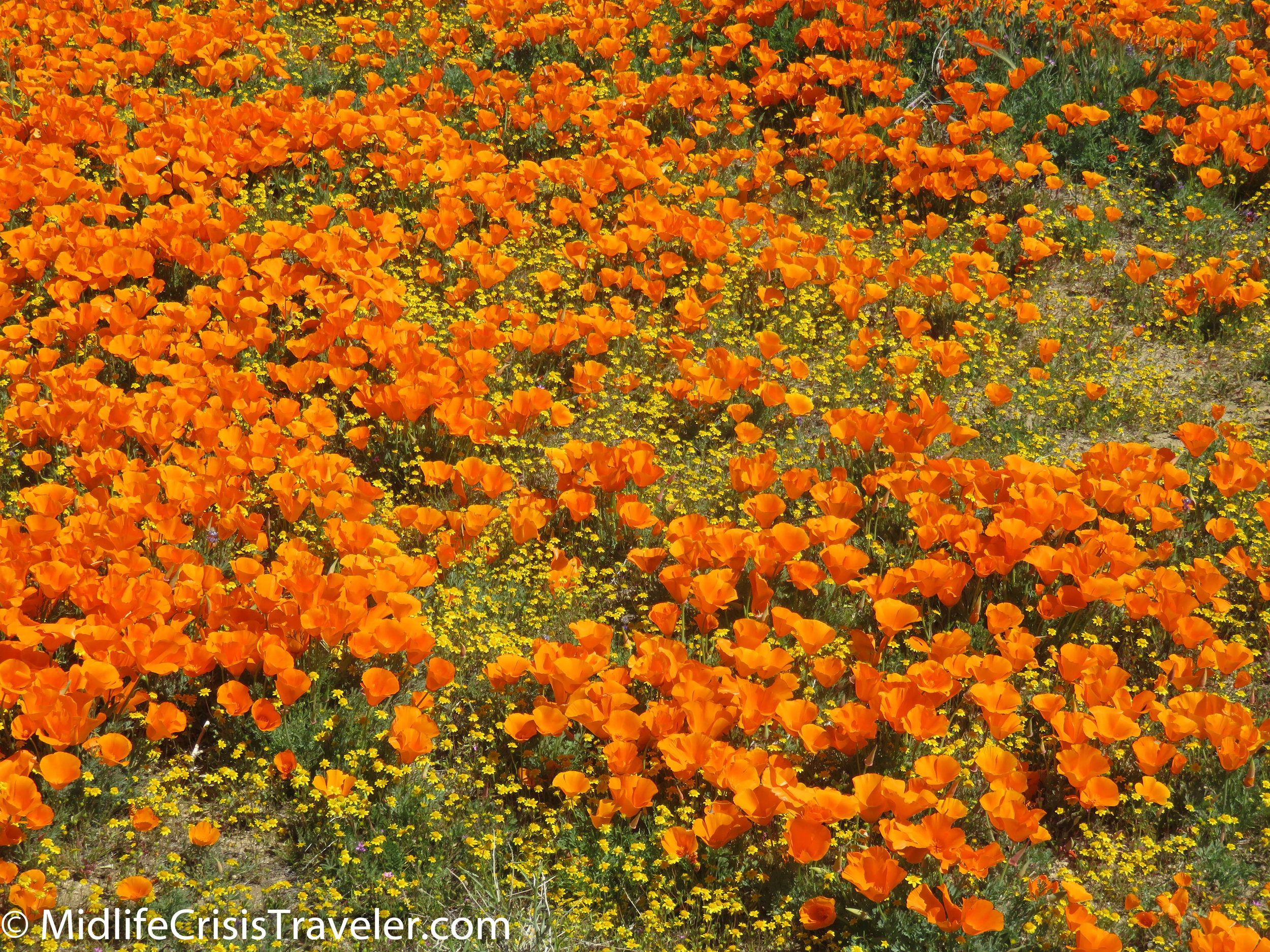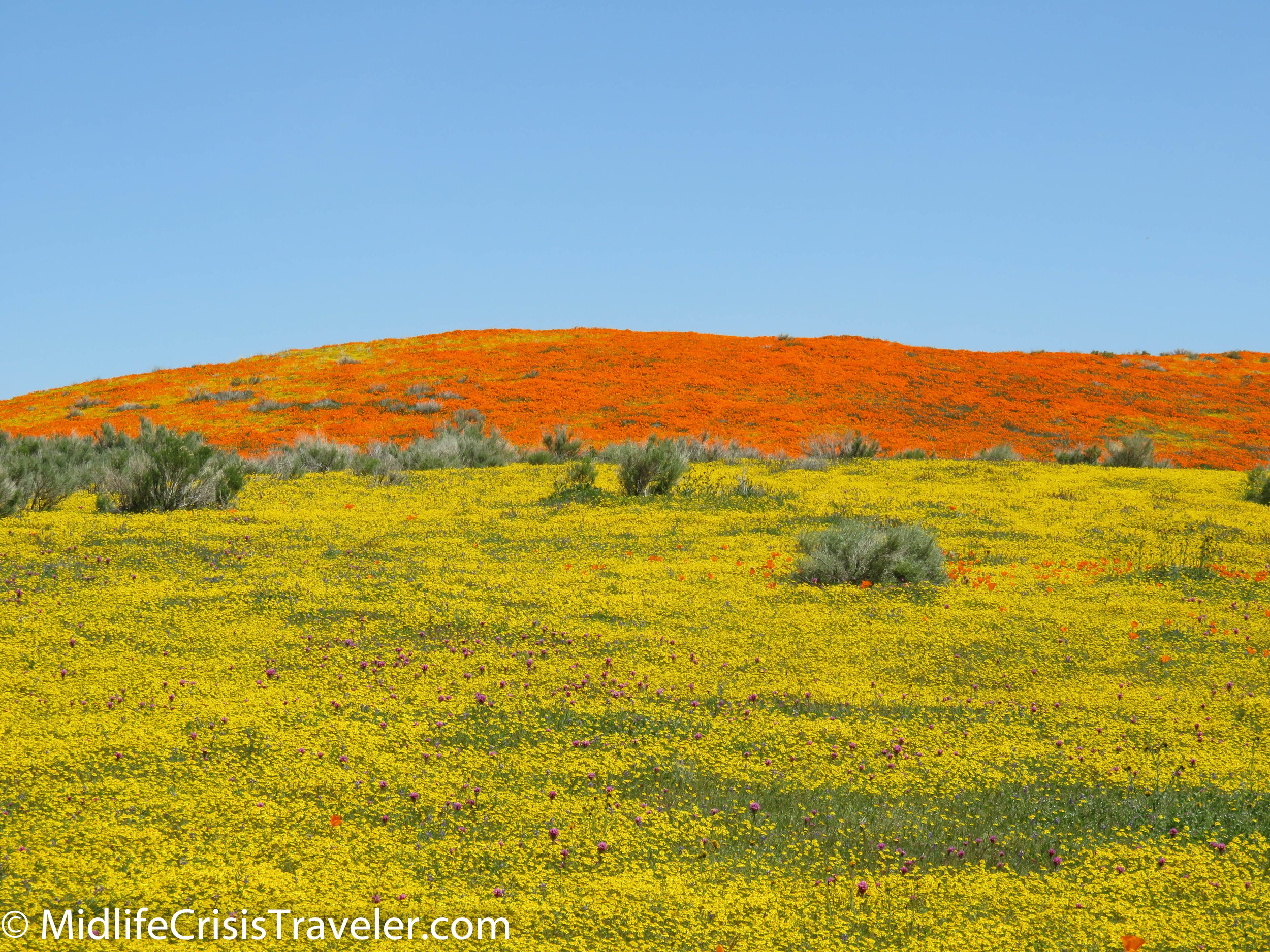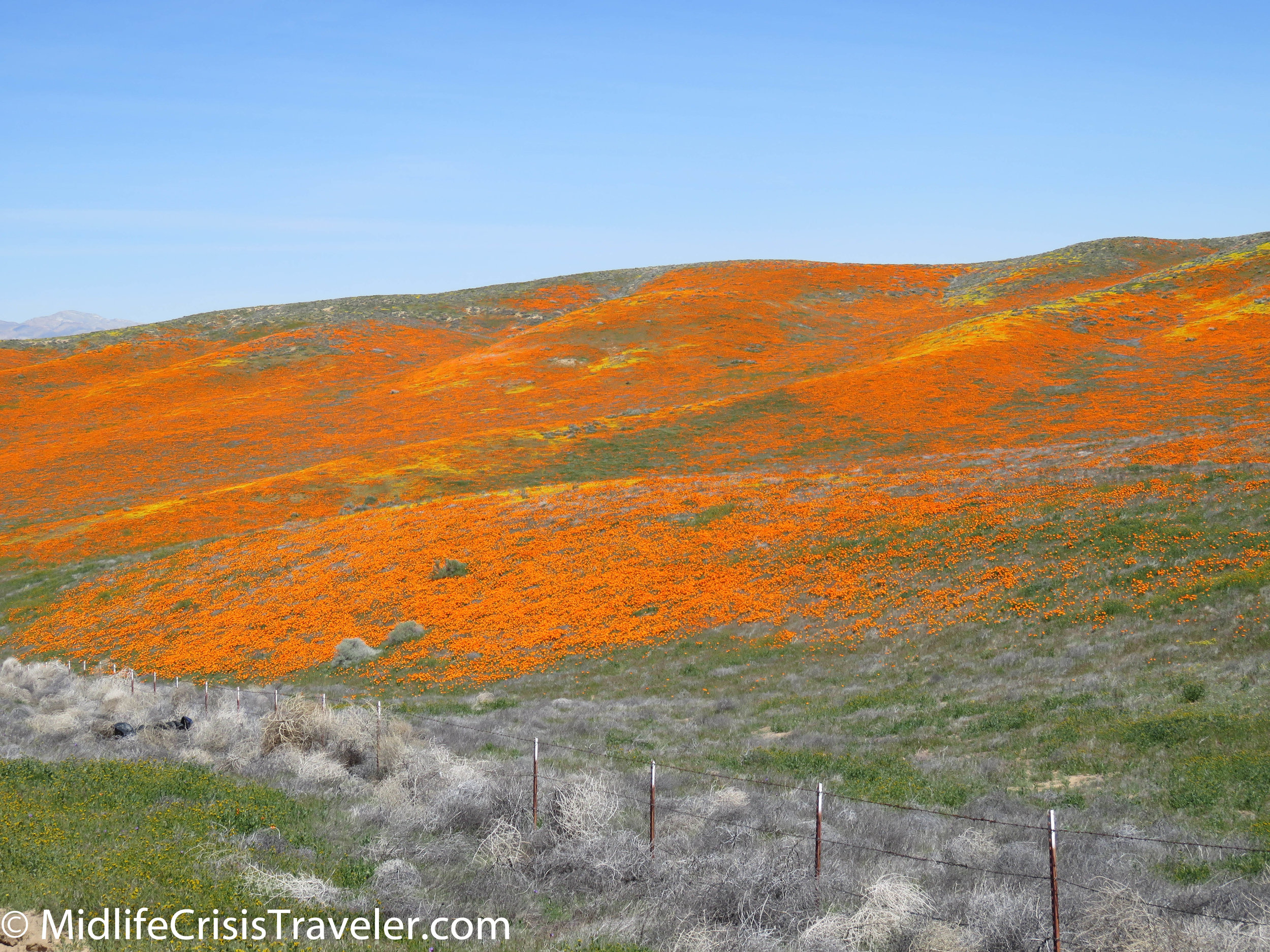THE SUPER BLOOM
Shortly after turning off the highway, the orange and yellow mounds appear approximately 10 miles on the horizon. Undulations covered in color, a contrast from the green fields and solar panels on the way. Halfway there, the fields are overrun with orange, yellow and purple flowers. The hills are now easily seen. They are vibrantly alive with an almost fluorescent color. A wet January and February have spawned the super bloom.
From the Poppy Reserve Website:
The Park
Each spring, the Antelope Valley California Poppy Reserve comes alive with the seasonal surprises of the Mojave Desert Grassland habitat. The duration and intensity of colors and scents vary from year to year. The wildflower season generally lasts from as early as mid-February through May, with a variety of wildflowers creating a mosaic of color that changes daily.
Eight miles of trails through the gentle rolling hills, including a paved section for wheelchair access, make the park a wonderful place to hike and explore any season. Get away from the city and relax in the quietude of the countryside, with the birds singing and hawks gliding silently overhead. Benches located along the trails make good places to sit quietly and watch for wildlife, such as meadow larks, lizards, and gopher snakes. If you're lucky, you may spot a coyote or bobcat. Numerous burrows around the trails may shelter mice, gophers, kangaroo rats, beetles, scorpions, or others.
For more information, click the link below.
http://www.parks.ca.gov/?page_id=627
THE OUTSKIRTS
THE RESERVE
More from the Reserve Website
The Antelope Valley is located in the western Mojave Desert at an elevation ranging from 2600--3000 feet, making it a high desert environment.
This State Natural Reserve is located on California's most consistent poppy-bearing land. Other wildflowers: owl's clover, lupine, goldfield, cream cups, and coreopsis, to name a few, share the desert grassland to produce a mosaic of color and fragrance each spring. As unpredictable as nature - the intensity and duration of the wildflower bloom varies yearly. California State Parks does not water or use any other means to stimulate the flowers; the land is preserved to only be influenced by the natural forces that had once influenced all of our surroundings. The broad views of this landscape provide eyefuls of brilliant wildflower colors and fragrance. Whether you most enjoy expansive fields or the close-up study of a single flower, this is the place to visit.
Have you visited the Poppy Reserve? What was your experience like? Have you visited other areas that have seen a super bloom this year?








